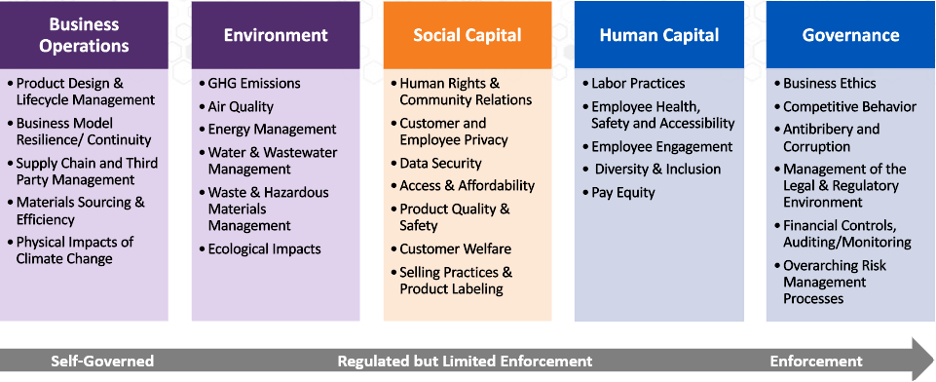Environmental, social and governance, more commonly referred to by its acronym ESG, is an umbrella term spanning many corporate activities. Notable ESG tasks or care-abouts include reporting, data gathering and efforts around making ethical and responsible business decisions surrounding sustainability, human capital, and ethics.
The bottom line: ESG strategy makes a huge impact on the business.
Many aspects of ESG are already regulated and integrated into corporate policy in the EU, but some are self-governed and considered “optional” – in the United States, at least for now. ESG and corporate compliance are quickly converging as more attention is paid to these matters in the social sphere, and new regulations are being increasingly discussed and planned for in the United States.
With an evolving regulatory landscape, compliance professionals are faced with the challenge of ensuring their organization is ready to stay ahead of the curve in training and compliance of these important issues.
The Basics of ESG
Beyond inherent social responsibility to ensure businesses are run sustainably and ethically, failure to prioritize ESG as a facet of the business can be detrimental to the bottom line. More and more, investors demand organizations have an ESG strategy, and the public pays close attention to these efforts when deciding where to vote with their dollars.
Operating sustainably and doing due diligence to combat climate change is the core of environmental efforts. From reporting to track greenhouse gas emissions to production practices that reduce energy consumption, water use, and waste production, understanding the financial materiality of environmental externalities is perhaps more important now than ever before.
Social and human capital strategies represent a nuanced category which support efforts in human rights and community relations, customer and employee welfare, data security, and transparent and ethical processes in the sales and product labeling cycle. While many social causes remain polarizing, an effort in supporting stakeholders and communities is a vital component to ESG strategy.
Governance is the most recognizable and regulated of the three; enforcement of training around ethics, anti-bribery and corruption, and auditing and management of financial controls are a few pillars of governance.
The bottom line: ESG strategy makes a huge impact on the business and its convergence with corporate compliance means more resources, visibility and initiatives must be taken to keep up with new regulations and social standards.

ESG Training: Are You More Prepared Than You Think?
Starting a complex corporate initiative involves detailed planning and preparation, sufficient resources and corporate buy-in and participation. Assessments of gaps helps determine where to focus, and long-term planning and prioritization of initiatives is critical when implementing an ESG program, and training employees accordingly.
The good news? You’re probably more prepared than you think when it comes to ESG training. Since ESG is an encompassing term for some of the many facets of compliance, trainings, declarations, and policies are likely already in place. A thorough audit of existing policies and corresponding trainings will yield varying results depending on program maturity, but you might be surprised what is already in place.
Common examples of ESG related policies and trainings include anti-bribery and corruption, data protection and security, diversity initiatives, harassment and discrimination, wage practices, human trafficking, community engagement activities, and more. Given the overlap between commonplace trainings and policy, organizations are already well on their way to meaningfully incorporating ESG into their compliance training programs.
Sustaining momentum and expanding compliance program initiatives is a multi-step, multi-year process. In the 2021 NAVEX Next Virtual Conference, Susanna Cagle, ESG Senior Product Manager, and Ingrid Fredeen, Engage VP & Senior Product Manager at NAVEX Global will discuss this convergence and why compliance professionals should expand their programs to better encompass ESG.






